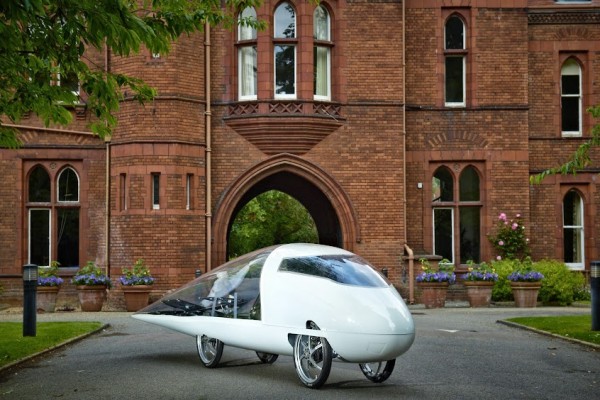The unveiling of college student designed and built solar cars for the upcoming World Solar Challenge continues with the debut from the University of Cambridge of Resolution. What’s particularly unique, and striking, about this vehicle is the teardrop shaped design those behind it believe will help them maximize solar power gain.
Resolution, according to the university, is the third vehicle its students have had in the Challenge. This time around what they’ve unveiled is something that they feel “rewrites the rulebook” on green vehicles. In stark contrast to designs more commonly seen in solar car entries, the Cambridge entry was a compromise on the idea that “solar performance needs to adapt to the movement of the sun, but the car needs a fixed shape to be at its most aerodynamic.”

This vehicle, which was developed and built with funds raised by the students, thus strives to reach the ideal solar power harnessing process in a solution which involved
embedding the solar panels within an aft-facing tracking plate. This plate follows the sun’s trajectory, and moves the panels themselves, so that they are optimally positioned at all times. The team estimate that this will give the car 20 per cent more power than it would have otherwise had.
This structure is placed under a canopy which forms part of the teardrop shape of the vehicle as a whole. The design is a departure from the “tabletop” look of most other solar cars, but is more aerodynamic. Because it encases the solar panels, rather than making them part of the shape, the question of power generation does not compromise the car’s aerodynamics.
To meet the needs of what was envisioned for solar power collection and performance on the road, Resolution measures less than 5m in length, is 0.8m wide and about 1.1m in height. This will likely be a claustrophobic experience for those driving the car across the Australian outback, given especially that the driver has to be a maximum of 5’ 3’’ tall.
The car weights 120kg, according to Cambridge, and can reach a top speed of almost 140 kilometres per hour (almost 87 miles per hour), but uses about the same amount of power as a hairdryer. It has been fitted with on-board telemetry, an “intelligent cruise control” which takes into account traffic, weather and driving style, and will advise the team on how to “optimise the vehicle’s efficiency during the race itself.”
“Efficiency is where our real strength lies and this is how we will be hoping to compete with the bigger teams entering the Challenge this time around,” said Keno Mario-Ghae, team manager for Cambridge University Eco-Racing, in a statement. “A huge amount of careful planning has gone into this project. It has involved research not just in terms of engineering and aerodynamics, but into the materials we use, the modelling behind the design, and the optimisation of the solar cells that power the car.”
Resolution will be competing against other college teams from around the world, including Delft University of Technology, Eindhoven University of Technology, University of Michigan and University of Toronto.